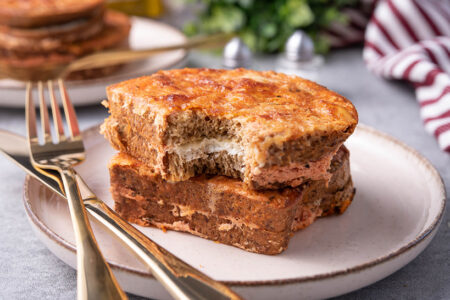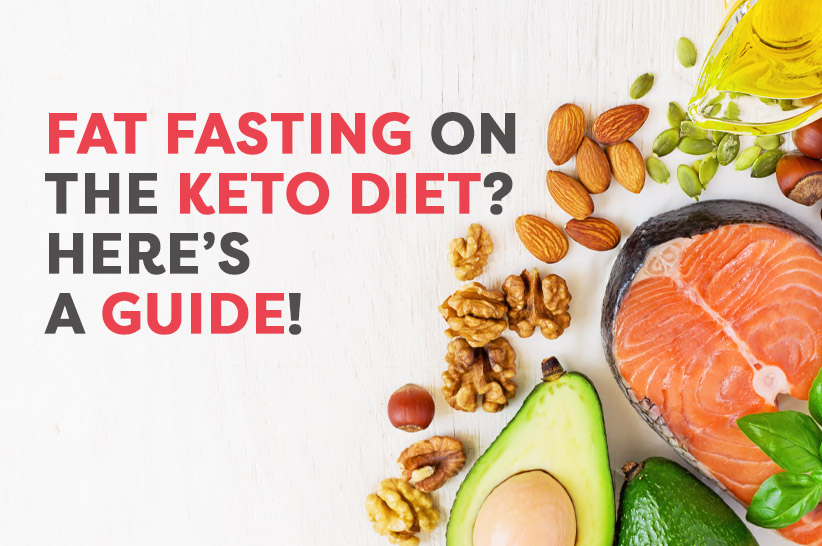Are you thinking of doing a fat fast on the standard ketogenic diet? Here’s what you should know about the types of foods to eat and avoid, how to plan meals during the day, and the numerous health benefits and drawbacks before giving it a go. And of course, always consult with your physician first to get the green light.
Many keto dieters struggle to lose weight in the midst of their journey. They might try fasting as an approach. A fat fast may be particularly appealing as you are eating mostly fats and can trick your body into ketosis where it burns fat and helps you shed pounds. By ditching carbs, you’re using fat for fuel in order to burn off that fat, and hit weight loss faster. Not sure how the fat fast technique works? Here’s a guide.
What Is Fat Fasting?
If you’re starting a low-carb high-fat diet like keto, you might want to get a little push to lose initial weight, and you may use fat fasting, which is where you fast by eating only between 1,000-1,200 calories a day for three days of the week.
For those who don’t know, fat fasting was introduced in Dr. Atkins’ New Diet Revolution best-selling book.
A fat fast quickly gets results. As you could tell, this type of eating is very restrictive and should only last for a few days max, rather than becoming a permanent style of eating for the long-term. It is also a variation of keto, as 80-90 percent of calories are coming from fat, so your body goes into ketosis while using fat fast as well. And studies show that fasting can lead to rapid weight loss, 1.
You can do it for 2-5 days, but never go over 5. And doing just 3 is a good middle mark. If you go longer than 5, your body will go into starvation mode and hold onto fat. As for meals, you would eat those 1000 to 1200 calories day and make that come to about 4 or 5 meals a day, with 200-250 calories per meal.
And once you finish you can then go into a standard ketogenic diet, where you increase your calorie intake but keep the carbs down and continue eating more high-fat foods.
It is important to continue following ketogenic diet after, just with more calories, since that initial weight loss is mostly water weight and you will gain it back if you begin adding more glycogen (from carbs) in your diet. If you’re looking to use fat fasting, here’s what to know before starting out including some negative side effects. And consult with your doctor and dietitian first for help with the transition.
Benefits of Fat Fasting
The greatest benefit for many keto dieters is that their body goes into lipolysis, which is where it uses fat to burn fat, rather than using glucose from high-sugar, high-carb foods. And if it did, then excess protein you’d be eating would be stored as fat, rather than burned off more effectively.
By doing this short-term keto diet fasting technique for a few days, a fat fast may help you get a jumpstart on weight loss. It gets that water weight off so you can dig deeper into fat stores and hit weight loss continuously.
If you’ve hit a weight loss plateau, it helps you lose that excess weight and get back on track. You may also use this following cheat day to re-enter ketosis. Consuming fats, especially from coconut, will boost ketone levels.
Foods to Eat and Avoid During a Fat Fast?
Since fat fast entails eating fat, focus on options like butter, oil, avocado, high-fat dairy, nuts and nut butter, fatty fish like salmon and tuna, and plenty of greens, such as leafy greens, broccoli, brussels sprouts, and other non-starchy veggies.
Following fat fast also entails eating protein in smaller amounts. If you’re already eating foods with protein, just add fat to that, like putting butter on steak, avocado on grilled chicken, or mayonnaise on deviled eggs. These proteins are beef, eggs, chicken, fish, turkey, nuts and seeds. You might also have keto snacks on hand like fat bombs, which can be sweet or savory and pack in those fats with few carbs.
As for what to avoid on a fat fast to overcome a weight loss plateau, avoid starchy veggies, baked goods that are not keto, low-fat dairy, grains and bread, sugary items and beverages, beans, pulses and legumes, certain condiments like ketchup or sugary dressings, and most fruits (you can eat berries in moderation on keto).
Basically if there is sugar or carbs, ditch it and go for something fattening instead. I recommend watching out for total carbs. Read the nutrition facts label when grocery shopping.
Fat Fasting Sample Meal Plan
Following fat fast? Check out this sample meal plan to see how this fat loss strategy works.
Monday
- Breakfast: Pecan Pie Fat Bombs and an egg with mayonnaise.
- Morning snack: Macadamia nut butter and ¼ avocado.
- Lunch: Keto Grilled Cheese and lathered butter.
- Afternoon snack: Cup of coffee and blended coconut meat.
- Dinner: Keto Bread Roll Ups.
Tuesday
- Breakfast: A cup of coffee with 30ml of heavy whipping cream
- Morning snack: One 8 oz. block of cream cheese
- Lunch: Small lettuce leaves with high-fat mayo and tuna on top
- Afternoon snack: 60g of cream cheese (Avoid those with high total carbs)
- Dinner: 2 scrambled eggs and unsweetened coconut milk
Wednesday
- Breakfast: Carrot Ginger Soup and handful of nuts.
- Morning snack: Gingerbread Fat Bombs and egg with mayonnaise.
- Lunch: 2 servings of Cookie Dough Fat Bombs.
- Afternoon snack: Bulletproof Coffee Egg Latte
- Dinner: 2 servings of Keto French Toast with heavy whipping cream.
Thursday
- Breakfast: Danish Butter Cookie and Pecan Pie Fat Bombs.
- Morning snack: Mint Chocolate Chip Green Smoothie.
- Lunch: Quick Golden Squash Soup dollop of full-fat Greek yogurt or sour cream.
- Afternoon snack: Mayo Green Deviled Eggs and ¼ avocado.
- Dinner: Bacon Wrapped Mini Sausage and pat of butter.
Friday
- Breakfast: Strawberry & Almond Cacao Smoothie and Snowball Cookies.
- Morning snack: Keto Mummy Meatballs.
- Lunch: Stuffed Cherry Tomatoes and grilled cheese with a pat of butter.
- Afternoon snack: Pecan Pie Fat Bombs.
- Dinner: Keto Lime Avocado Smoothie with heavy whipping cream..
How to Fat Fast the Right Way
If you are using fat fast then follow the structure for meal plans (200-250 calories and 4-5 meals a day) and do not go over five days max. Plus, drink plenty of water to stay hydrated, since dehydration can be a side effect of keto too. Keep a journal to take note of how you feel and weight loss results over time. Also, track your carbohydrate intake.
If you feel sick at any point, then stop the fat fast.
Negative Side Effects of Fat Fasting: Safety Concerns
A drawback for many keto dieters is that it is super restrictive, which can be hard to deal with for someone who doesn’t like structure. Plus if you are eating too few calories your body might begin to starve and you won’t lose weight but store fat instead, and your metabolism will be lower.
Yet, the main drawback is if you go over the recommended period of doing the fat fast. If you won’t stick to this short-term keto diet fasting strategy by exceeding five days, then you will get this side effect and calorie deficit that can be bad for your body and health long-term.
If you’re not on a standard ketogenic diet and doing a fat fast, watch out for keto flu symptoms. Keto flu symptoms can last for a few days to two weeks. They include fatigue, inability to exercise due to low energy, headaches, constipation, and nausea.
Is Fat Fasting Healthy for Everyone?
No it is not. It can be good for someone who likes faster weight loss results and has the willpower for it. But if you are worried about counting calories and negative side effects like fatigue, dizziness or feeling sick, then you avoid fat fasting and contact your doctor. If you really want to fast, alternatively, you can try intermittent fasting.
Summary
Since fat fast might be a good option for experiencing weight loss sooner and boosting ketone levels, it’s worth a try. However, it can also depend on the person. Use fat fasting if you’re curious, but do so the right way. Make sure to do your research to know if this way of eating works best for you.




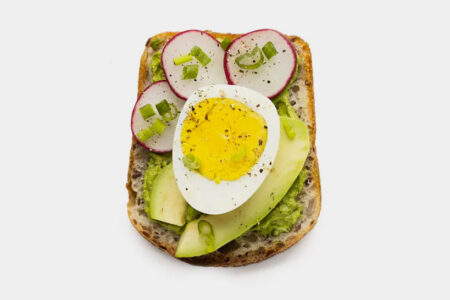
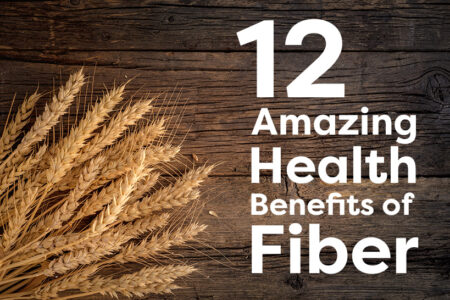
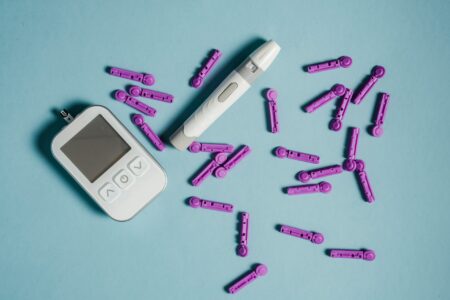



![Juicing for Weight Loss: Everything You Need to Know [Plus Recipes]](/wp-content/uploads/2019/08/Juicing-for-Weight-featured-image.jpg)


